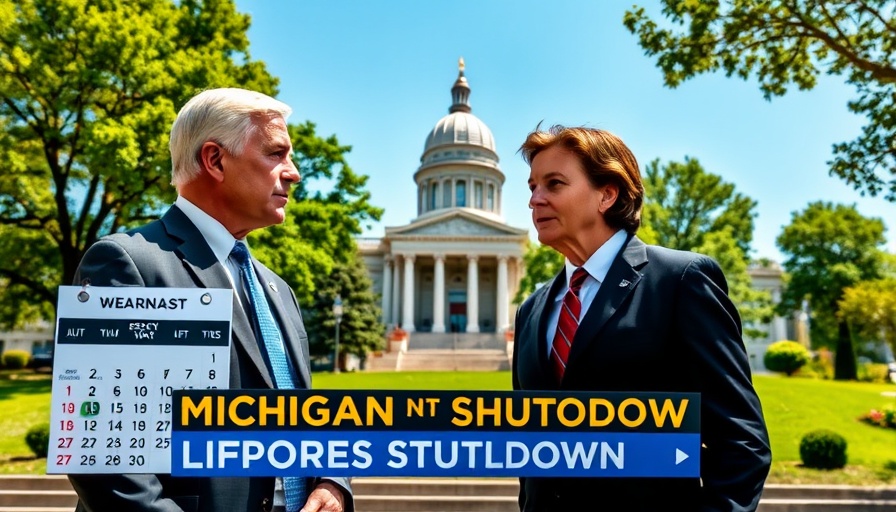
Hamtramck's Leadership Shakeup: A Consequential Move for Local Governance
The recent decision by the Hamtramck City Council to terminate both the police chief, Jamila Tahiri, and city manager, Max Garbarino, has sent shockwaves through this Michigan community. This controversial move arises in the wake of serious allegations detailed in a report that highlighted misconduct spanning six years, further complicating an already tumultuous governance landscape.
In 'City of Hamtramck votes to terminate police chief, city manager', the discussion dives into the recent leadership changes in Hamtramck, exploring key insights that sparked deeper analysis on our end.
Understanding the Allegations: A Layered Investigation
The report from Miller Johnson stipulated numerous allegations against Chief Tahiri, including the alleged destruction of evidence by wiping his city-issued cell phone and driving recklessly under the influence after visiting a strip club. Such claims paint a challenging portrait of local law enforcement leadership, raising both concerns about accountability and clarion calls for further transparency within the department.
Moreover, the report detailed travel violations and public misconduct, reiterating a troubling narrative about the implications of leadership stagnation within the Hamtramck Police Department. As law enforcement agencies grapple with their roles in public trust and community safety, these events signal a critical need for introspection and reform.
Public Response: The Voice of the Community
A wave of apprehension has swept through Hamtramck as residents reflect on how these decisions will impact the day-to-day operations of city governance. Public safety, trust in law enforcement, and community morale hang precariously in the balance, leading residents to question who will step up to fill the power vacuum left by the sudden leadership changes.
Many residents are vocal about wanting to ensure that their public servants are accountable to the citizens, not just the council. A prevalent concern among them is stability in local governance, as any disruption could delay critical services or lead to corruption within the ranks, further alienating them from those they expect to protect and serve.
What Lies Ahead: Potential Fallout and the Road to Recovery
As we look ahead, the ramifications of these terminations could unfold in various ways. With Garbarino already indicating plans for legal action against the council, the potential for expensive litigation looms large over Hamtramck taxpayers. A long litigation process could divert needed funds from community services, raising further questions about budget allocation and resource management.
The current urgent task is to ensure that leadership transitions are smooth and that continuity in governance is maintained. Community leaders must source qualified candidates to fill the gaps in leadership while the city grapples with the implications of these terminations.
The Larger Picture: Police Misconduct and Community Trust
This incident in Hamtramck is not an isolated event. Across Michigan and the nation, incidents of police misconduct and city governance crises have spurred widespread calls for reform. As public trust in law enforcement continues to erode in many communities, how local leaders respond to situations like this in Hamtramck could influence the future of policing norms across the country.
Communities are increasingly prioritizing transparency and accountability from their leaders, looking for assurances that the values of integrity and respect for the law will prevail. This incident could serve as a pivotal learning experience, providing important insights into handling police accountability that resonates with broader national discussions on civil rights and systemic reform.
Conclusion: Staying Informed and Engaged
As the Hamtramck community navigates the uncertain waters of leadership transition, it becomes imperative for residents to stay informed about developments in their local governance. Understanding the implications of these changes not only empowers residents but also fosters accountability among their local officials. Keeping the community engaged in conversations around governance and reform will be fundamental in rebuilding trust and advancing public safety initiatives.
For more updates on Hamtramck’s evolving political landscape and related issues affecting Michigan, stay tuned for ongoing local news coverage that dives deeper into community dynamics and the implications for public safety and local governance.
 Add Row
Add Row  Add
Add 



Write A Comment